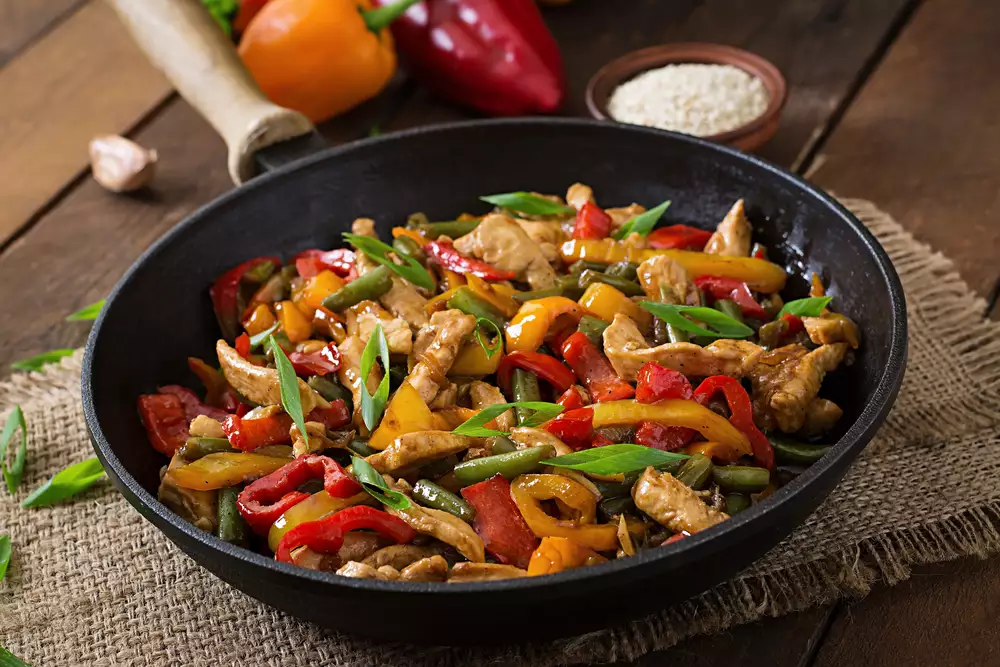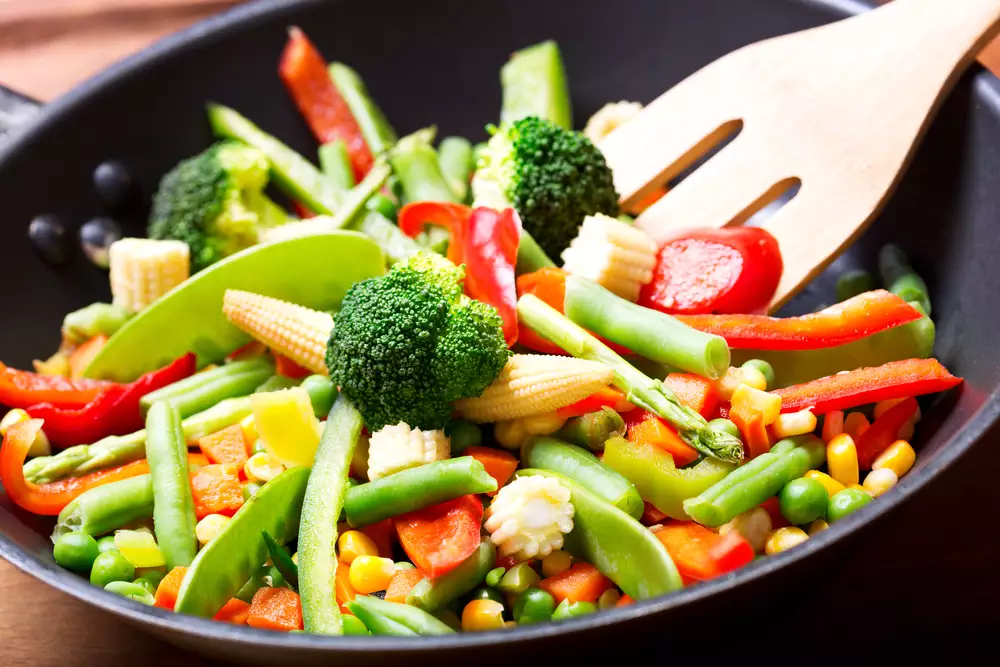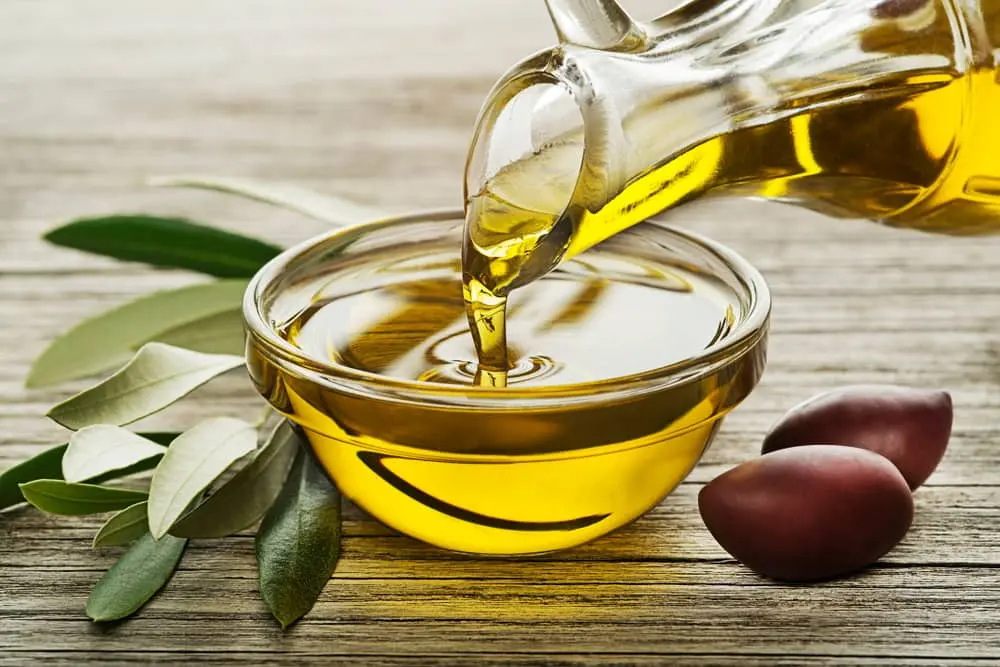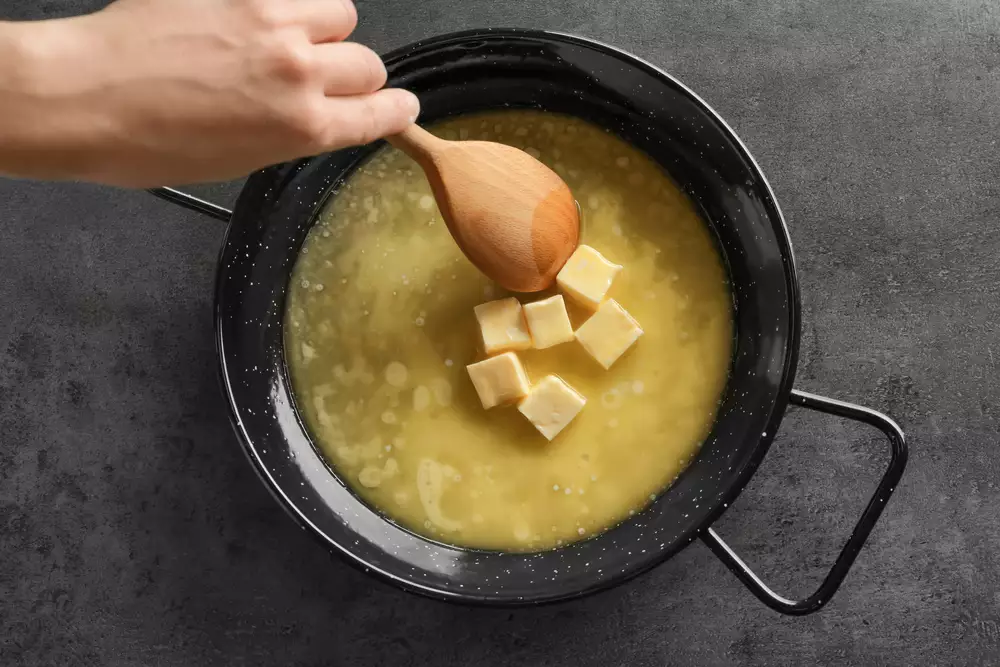Stir-frying is an art – one that relies heavily on the right type of oil and its quantity. This fast-paced cooking method, renowned in Asian cuisine, can transform raw ingredients into a flavorful masterpiece in just a matter of minutes. Yet, despite its simplicity, the technique often raises a pertinent question: How much oil should you use for stir fry?
Simply put, the right amount of oil is usually one to two tablespoons, depending on your wok size and the number of ingredients. However, it is not a one-size-fits-all answer. It depends on several factors like the type of oil, ingredients, and personal preferences, which we will explore further.
Now, let’s dive deeper into the world of stir frying and discover the secrets behind the glossy and non-sticky stir fry dishes we all love so much.
The Concept of Stir Frying
Origin and Brief History
Stir frying originated from China, specifically, from the Han Dynasty. It gained popularity due to its speed and ability to conserve fuel. This method of cooking promotes even heat distribution, hence, resulting in perfectly cooked ingredients with enhanced flavor profiles.
Fundamental Principles
The basic idea behind stir frying involves quick cooking over high heat while constantly stirring and tossing the ingredients. It ensures uniform heat distribution, prevents the food from sticking, and helps to retain the natural colors, flavors, and nutrients of the ingredients.
Role of Oil in Stir Frying
Oil as a Cooking Medium
In stir frying, oil serves as a medium to transmit heat to the food. It also creates a non-stick surface on the wok, reducing the chance of food sticking and burning.
Flavor and Texture Enhancement
Different oils offer distinct flavors that can enhance the overall taste of your stir fry. The right oil can give your dish a restaurant-like feel, transforming your humble stir fry into a gourmet feast. Additionally, oil contributes to the texture, lending that much-desired glossy appearance.

Choosing the Right Oil for Stir Fry
Importance of Smoke Point
The smoke point of oil, the temperature at which it starts to smoke and break down, is crucial in stir frying. Oils with high smoke points like peanut oil, canola oil, and avocado oil are suitable for stir fry.
Flavor Profiles of Common Oils
Different oils have different flavor profiles. For instance, sesame oil adds a distinct nutty flavor, while olive oil gives a Mediterranean touch to the dish. So, consider the flavor profile of the oil while cooking your stir fry.
Health Aspects to Consider
Health should always be a priority when choosing oil. Oils rich in monounsaturated and polyunsaturated fats like olive oil, avocado oil, and peanut oil are generally healthier options.
How Much Oil Should You Use in Stir Fry?
Determining the right amount of oil for your stir fry can make a significant difference in your culinary experience. The quantity of oil can affect not only the texture and flavor but also the health aspect of the dish.
General Rule of Thumb
As a rule of thumb, one to two tablespoons of oil are typically sufficient for a standard wok. However, remember that this is not a fixed rule, but a starting point. The amount can vary based on the size of your wok, the type of food you are cooking, and the number of servings you intend to prepare.
A larger wok or a larger quantity of ingredients may necessitate a bit more oil to ensure everything gets cooked evenly without sticking. On the other hand, if you’re cooking for one or using a small pan, you might need less oil.

Factors Influencing Oil Quantity
There are several factors that can influence the amount of oil needed for a perfect stir fry.
Type of Ingredients: The ingredients you’re using can significantly affect how much oil you need. Some ingredients, like tofu or eggplant, tend to absorb more oil, which means you might need to add a little more than usual to prevent the dish from becoming dry.
On the other hand, certain ingredients, such as mushrooms or leafy greens, release water while cooking, which can reduce the amount of oil you need. Similarly, ingredients like meat or poultry, which are often marinated prior to stir frying, can also reduce the oil requirement.
Cooking Style: The style of stir frying can also influence oil usage. For instance, if you prefer a more “dry” style of stir fry, you might use less oil. Conversely, if you like your stir fry to be more “saucy” or glossy, you might need a bit more oil to achieve that effect.
Personal Preference: At the end of the day, the amount of oil you use can also boil down to personal preference. Some people prefer their stir fry to be lighter and less oily, while others might prefer it a bit more decadent. Experimenting with different amounts can help you find your preferred balance.
Is it healthy to stir-fry with olive oil?

Olive oil is a good choice for stir-frying because it has a high smoke point and neutral flavor. But note that extra virgin olive oil should not be used when cooking overheats as its smoke point is too low (around 350°F).
Instead, choose light or refined olive oils with higher smoking points such as grapeseed, sunflower, or peanut oil.
Techniques for Adding Oil to Stir Fry
Using the correct techniques for adding oil can go a long way in achieving the perfect stir fry.
Adding Oil to the Pan
Adding oil to your stir fry isn’t as simple as just pouring it in. It’s important to heat your wok or pan first before adding oil. This practice ensures that your pan reaches the appropriate temperature for stir frying and prevents the oil from breaking down too soon. Additionally, it creates a kind of non-stick effect, reducing the likelihood of food sticking to the pan.
Once the pan is hot, you can add the oil. Pour the oil slowly, and allow it to heat up for a few seconds before adding your ingredients.
Oil Drizzling Technique
Instead of just dumping the oil in the center of the wok, try using the drizzling technique. Start adding oil from the edge of the pan and circle towards the center. This technique ensures that the oil is evenly distributed over the cooking surface.
This method is particularly useful when stir frying large quantities of food or when using a large wok. It ensures that all parts of the wok are greased, creating a more even cooking environment and preventing any food from sticking to the wok’s surface.
Consideration for Different Ingredients
Different ingredients require different cooking techniques, and this includes how you add your oil. For example, if you’re cooking ingredients that tend to absorb oil, like tofu or eggplant, you might want to add a little oil, cook these ingredients first, remove them, then add a bit more oil to cook the rest of your ingredients. This method prevents these oil-absorbing ingredients from soaking up all the oil and leaving none for the rest of the dish.
On the other hand, for ingredients that release water while cooking, like mushrooms or leafy greens, you can add less oil initially, as these ingredients will release liquid that will help to prevent other ingredients from sticking.
Can you reuse cooking oil?
Cooking oils can be reused, provided they haven’t been used for frying. Reusing the oil is a simple process, but you should take some safety precautions when doing so.
Can you use butter instead of oil for stir-fry?

When cooking with butter, it is essential to remember that water and milk solids are present.
This means you cannot use it straight from the fridge for high-heat stir-frying because of its lower smoke points, but Clarified Butter can be used as an alternative with more stable fats than regular vegetable oil does.
Common Mistakes When Using Oil in Stir Fry
Even with the best intentions, it’s easy to make mistakes when using oil in stir fry. Let’s look at some of the most common ones and how to avoid them.
Using Too Much or Too Little Oil
Using too much oil can leave your stir fry feeling greasy and heavy, while too little can lead to food sticking to the wok or unevenly cooked ingredients. As discussed earlier, using one to two tablespoons as a starting point and then adjusting based on your ingredients and personal preference can help avoid this issue.
Choosing the Wrong Oil
Not all oils are suitable for stir frying due to their smoke point. Using an oil with a low smoke point can result in a burnt taste and an unpleasant smell. It can also break down into harmful compounds. Stick to oils with a high smoke point, like canola oil, peanut oil, or avocado oil for the best results.
Not Heating Oil Correctly
Adding oil to a cold wok or not letting it heat up properly before adding ingredients can lead to food sticking to the wok or uneven cooking. Ensure your wok is properly heated before adding oil and let the oil heat up before adding your ingredients.
Are frozen stir fry vegetables healthy?

Frozen vegetables are just as healthy as fresh vegetables. Some frozen vegetables may be even more nutritious than their new counterparts because they’re picked and frozen at the peak of ripeness.
Plus, frozen veggies are a great way to add extra nutrient-rich produce to your diet without spending time prepping them yourself.
Expert Tips on Stir Fry Oil Usage
To help you further in your stir fry journey, here are some expert tips on oil usage in stir fry:
Preheat Your Wok
Always preheat your wok before adding oil. A properly heated wok will cause the oil to shimmer or ripple, signaling it’s ready for the ingredients.
Choose Your Oil Based on Flavor
While the smoke point is important, also consider the flavor of the oil. Some oils, like sesame oil or coconut oil, have a strong flavor that can influence the taste of your stir fry.
Consider the Health Factor
While taste and cooking performance are important, don’t forget about the health aspect. Opt for oils high in monounsaturated and polyunsaturated fats, which are heart-healthy fats.

Frequently Asked Questions
Can I use olive oil for stir frying?
While olive oil is generally healthy, it has a lower smoke point compared to other oils, making it less suitable for high-heat cooking like stir frying. However, extra virgin olive oil has a higher smoke point and can be used for stir frying, but it will impart a distinct flavor to the dish.
Can I stir fry without oil?
Yes, it’s possible to stir fry without oil, using techniques like water stir frying or steam frying. However, keep in mind that this may alter the texture and flavor of the dish.
Can I reuse oil from my previous stir fry?
Reusing oil is not typically recommended, as it can degrade and form harmful compounds upon reheating. However, if you must reuse it, strain it to remove any food particles and store it properly.
Conclusion
Stir frying is a fascinating cooking technique that blends together flavors, colors, and textures. The oil you choose and the amount you use play a critical role in determining the final outcome of your dish.
However, there’s no absolute rule to it – it’s more about understanding the principles, knowing your ingredients, and being guided by your personal preference.
Remember, the right amount of oil for a stir fry is usually one to two tablespoons for a standard wok, but you can adjust based on factors such as wok size, ingredient types, and desired texture.
